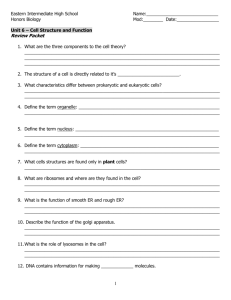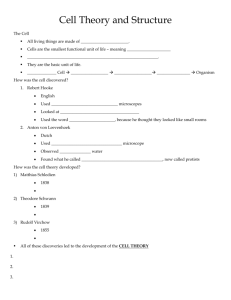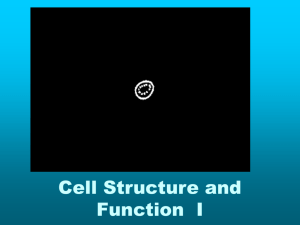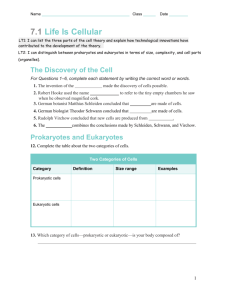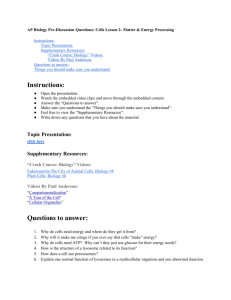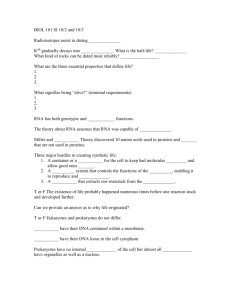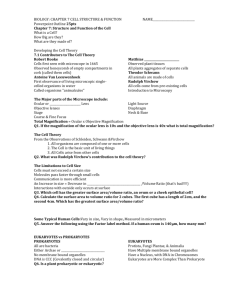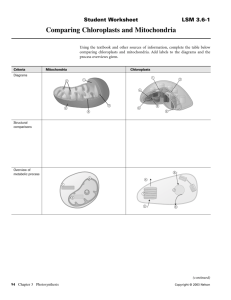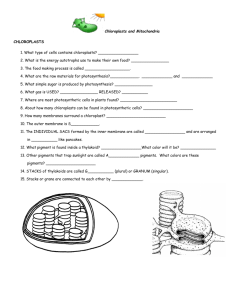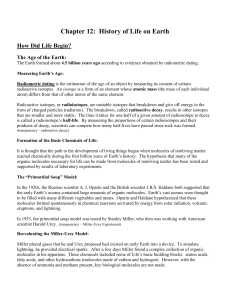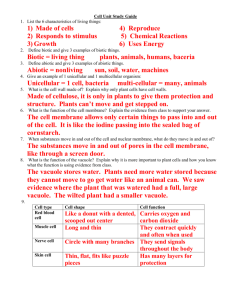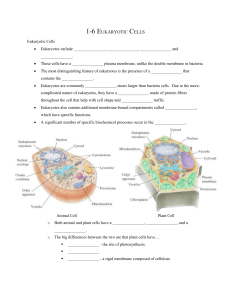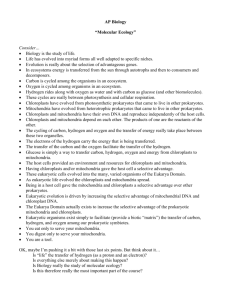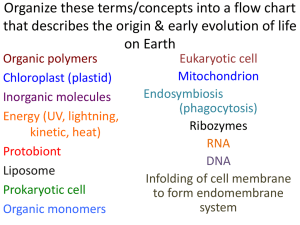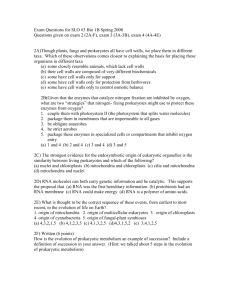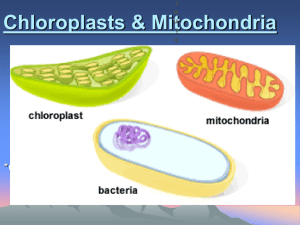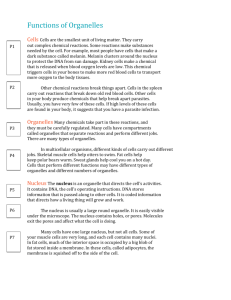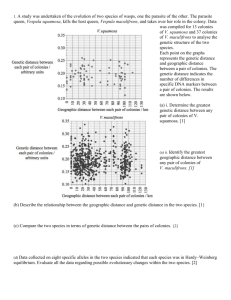Ch. 3.4- Origin and Evolution of the Eukaryotic Cell Review
advertisement
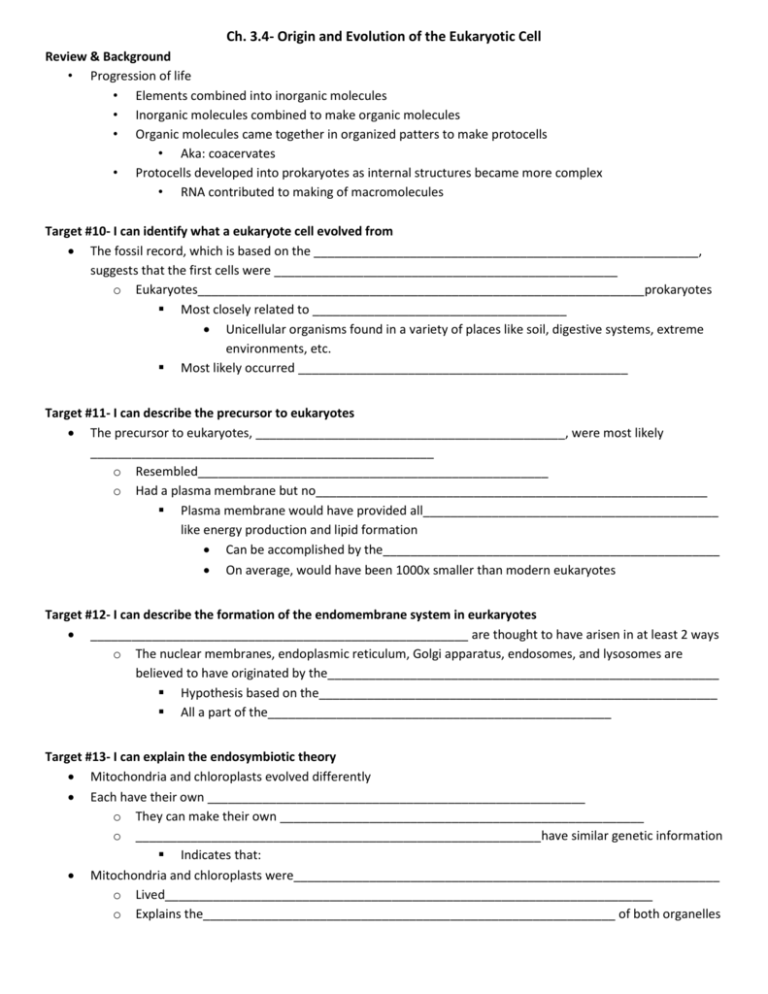
Ch. 3.4- Origin and Evolution of the Eukaryotic Cell Review & Background • Progression of life • Elements combined into inorganic molecules • Inorganic molecules combined to make organic molecules • Organic molecules came together in organized patters to make protocells • Aka: coacervates • Protocells developed into prokaryotes as internal structures became more complex • RNA contributed to making of macromolecules Target #10- I can identify what a eukaryote cell evolved from The fossil record, which is based on the ________________________________________________________, suggests that the first cells were __________________________________________________ o Eukaryotes_________________________________________________________________prokaryotes Most closely related to _____________________________________ Unicellular organisms found in a variety of places like soil, digestive systems, extreme environments, etc. Most likely occurred ________________________________________________ Target #11- I can describe the precursor to eukaryotes The precursor to eukaryotes, _____________________________________________, were most likely __________________________________________________ o Resembled___________________________________________________ o Had a plasma membrane but no_________________________________________________________ Plasma membrane would have provided all___________________________________________ like energy production and lipid formation Can be accomplished by the_________________________________________________ On average, would have been 1000x smaller than modern eukaryotes Target #12- I can describe the formation of the endomembrane system in eurkaryotes _______________________________________________________ are thought to have arisen in at least 2 ways o The nuclear membranes, endoplasmic reticulum, Golgi apparatus, endosomes, and lysosomes are believed to have originated by the_________________________________________________________ Hypothesis based on the__________________________________________________________ All a part of the__________________________________________________ Target #13- I can explain the endosymbiotic theory Mitochondria and chloroplasts evolved differently Each have their own _______________________________________________________ o They can make their own _____________________________________________________ o ___________________________________________________________have similar genetic information Indicates that: Mitochondria and chloroplasts were______________________________________________________________ o Lived_______________________________________________________________________ o Explains the____________________________________________________________ of both organelles Target #14- I can list the evidence for the endo-symbiotic Theory 1- Mitochondria and chloroplasts are similar to bacteria in____________________________________________ 2- Both organelles are bound by a ________________________________________________________________ o The outer membrane derived from the ___________________________________________________ o ___________________________________________________ original plasma membrane of the original prokaryote 3- Mitochondria and chloroplasts contain__________________________________________________________ o Structure similar to _____________________________________________________________________ 4- Mitochondria and Chloroplasts have their own ________________________________________________and produce their own ______________________________________________________________ o The ribosomes resemble those found in prokaryotes 5- The___________________________________________ of the ______________________________________ in chloroplasts and mitochondria also suggest a prokaryote origin


